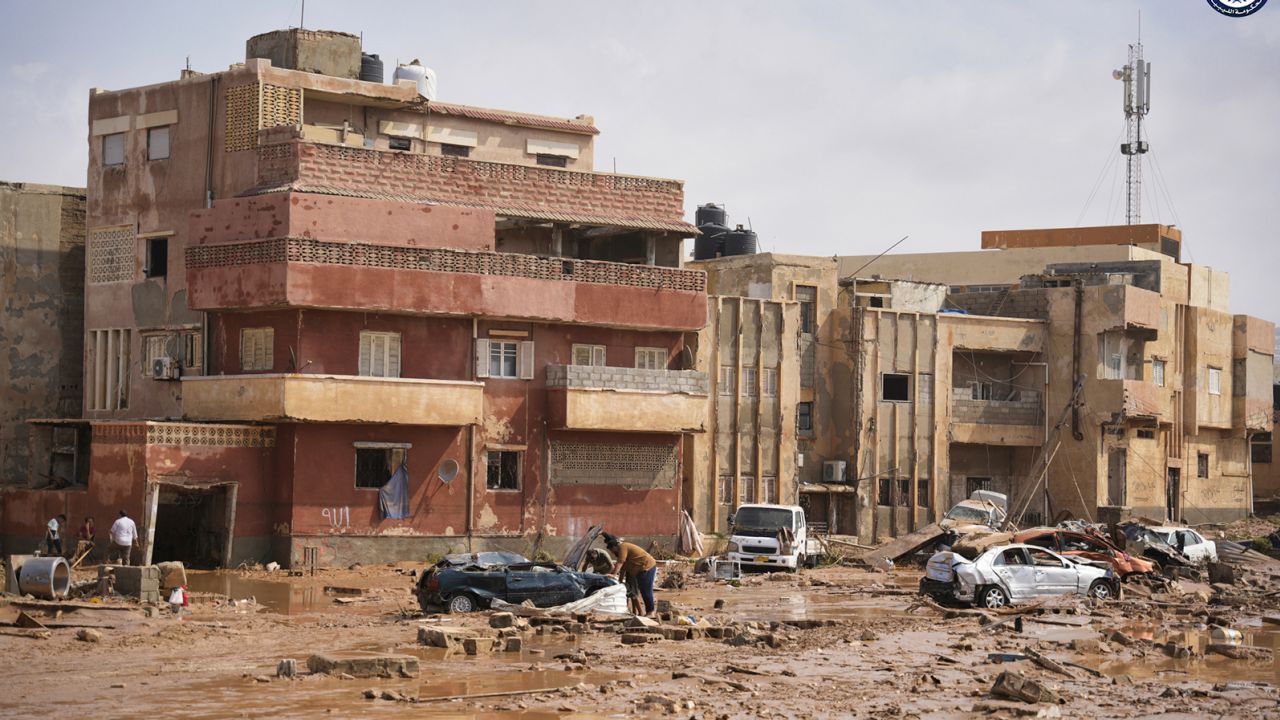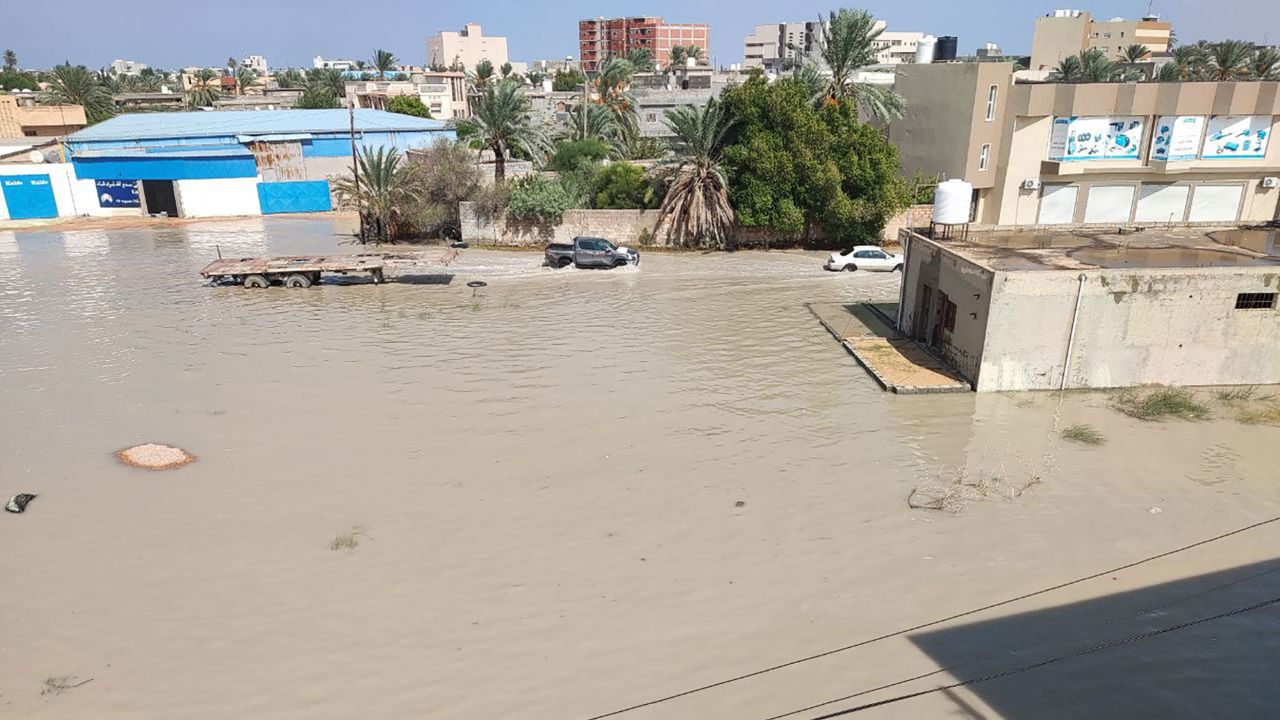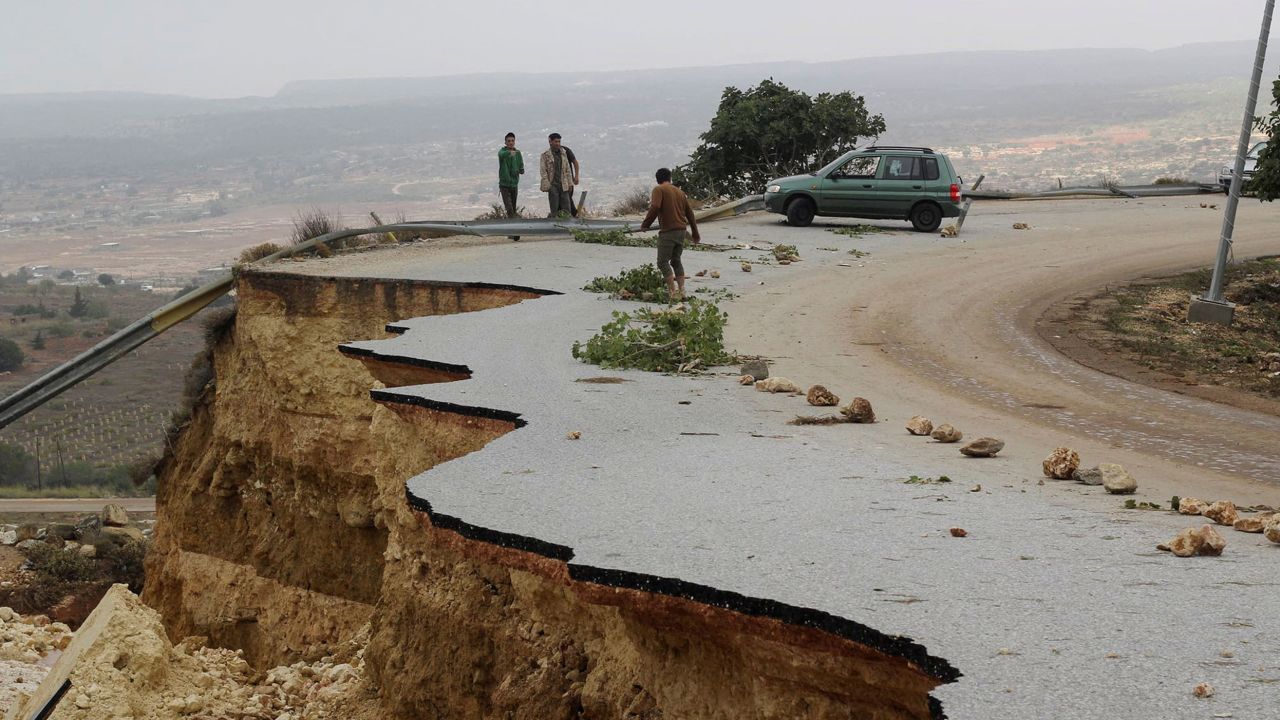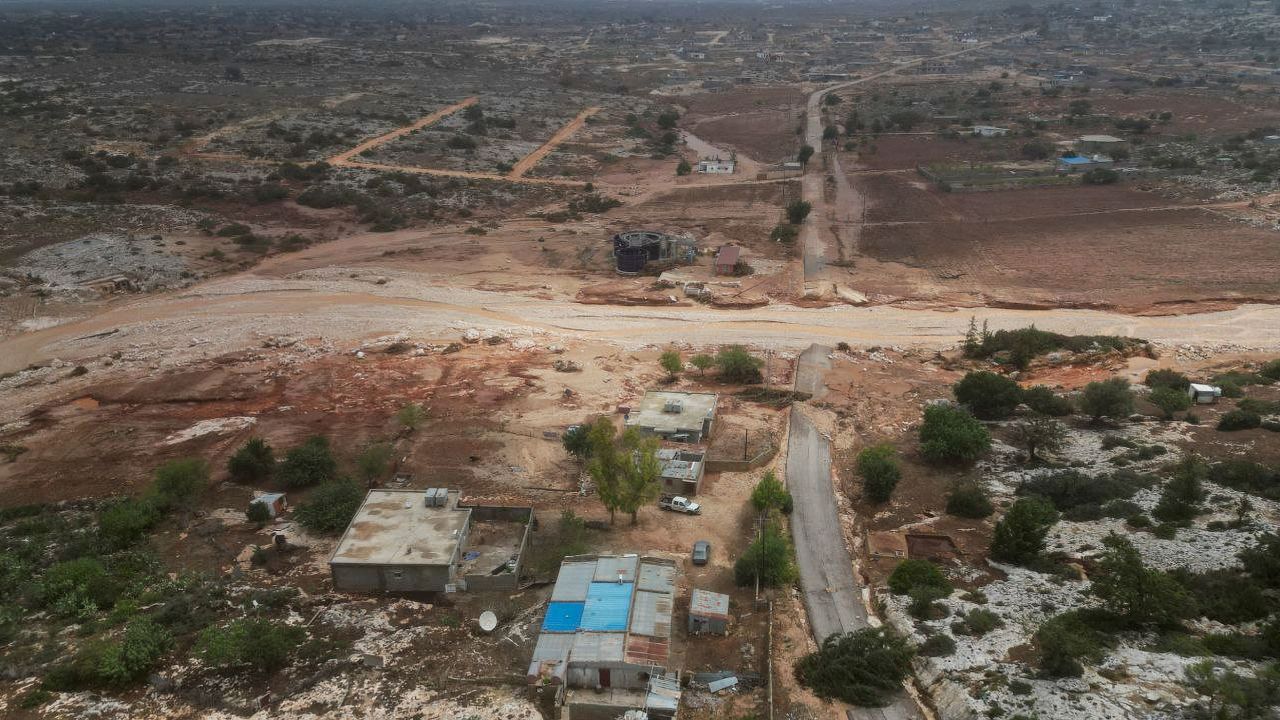CNN
—
Thousands of people are feared dead after storm Daniel brought heavy rains to the northeast in Libya, causing two dams to collapse in one area and submerge entire neighborhoods into the sea.
More than 2,000 people have died and about 6,000 are missing in the worst-hit city of Derna, said Othman Abduljalil, the health minister of Libya’s eastern parliament-backed government.
“The situation [in Derna] It was devastating… bodies are still lying in many places,” Abduljalil told Libya’s Almazar TV from Derna on Monday.
Describing Terna as a “ghost town,” Abduljalil said parts of the city were isolated by flooding. He appealed for help from the international community, saying authorities needed search and rescue teams.
Libya’s Red Crescent Society previously estimated that more than 300 people had died in Derna. Mail On social media.
Ahmed Mismari, spokesman for the eastern-based Libyan National Army (LNA), said two dams collapsed under the pressure of the flood.
As a result, three bridges were destroyed. The flowing water carried away entire neighborhoods and eventually they went into the sea,” he said.

The head of Libya’s Emergency and Ambulance Authority, Osama Ali, told CNN that after the dam collapsed “all the water went into the coastal area, a hilly area near Terna.”
Houses in valleys were swept away by strong mud currents that carried vehicles and garbage, he said. Telephone lines in the city were also down, complicating rescue efforts, Ali said, adding that workers were unable to enter Terna due to the heavy destruction.
Ali said authorities did not expect the scale of the disaster.
“Weather conditions, sea water levels and precipitation are not well studied [were not studied]”The wind speed is not evacuating families who may be in the path of the storm and in the valleys,” Ali said.

“Libya is not prepared for a disaster. It has never experienced a disaster of that magnitude. This is the first time we have faced a disaster of that magnitude, but we admit that there are shortcomings,” Ali al-Hurrah told the channel earlier.
LNA spokesman Mizmari said the floods affected several cities, including Al-Bayda, Al-Marj, Tobruk, Daganis, Al-Bayada and Bata, as well as the east coast as far as Benghazi.
Libya, home to six million people, has been divided between warring factions since 2014, following a NATO-backed uprising against Muammar Gaddafi in 2011.
Osama Hamad, head of Libya’s eastern parliament-backed government, described the situation as “catastrophic and unprecedented,” according to a report by state news agency Libyan News Agency (LANA).
Footage shared on social media showed submerged cars, collapsed buildings and water running down streets.
Hospitals in Beida’s eastern city of Beida were evacuated after severe flooding caused by rain from a heavy storm, videos shared on Facebook by Beida’s medical center showed.

“The United Nations in Libya is closely monitoring the emergency caused by severe weather in the eastern part of the country,” the United Nations Support Mission in Libya said in a post on X.
Many countries have sent their condolences and offered aid to Libya as rescue teams struggle to find survivors from the rubble and rubble.
Turkey’s disaster agency says it will mobilize 150 search and rescue workers on Monday, along with other supplies such as tents, rescue vehicles and generators.
The U.S. Embassy in Libya said on X, formally known as Twitter, that it was “in close contact with the United Nations and authorities in Libya to determine how quickly we can help where it is most needed.”
The president of the United Arab Emirates, Saeed Al Nahyan, has ordered the dispatch of aid and search and rescue teams while offering his condolences to the victims of the disaster, the state news agency said.
Egyptian President Abdel-Battah El-Sisi also expressed his condolences to Libya. “I wish the wounded a speedy recovery and I hope the crisis will pass soon with Libyans standing together,” El-Sisi said in a statement on social media.
The weekend rain is the result of the remnants of a very strong low pressure system in southeastern Europe, officially named Storm Daniel by the National Weather Service.

The storm developed into a tropical cyclone before moving into the Mediterranean Sea last week, causing devastating flooding in Greece. These systems can bring dangerous conditions like tropical storms and hurricanes in the Atlantic or hurricanes in the Pacific to the Mediterranean and coastal countries.
Remnants of the storm will affect northern Libya and slowly move eastward toward northern Egypt. Rainfall could reach 50mm over the next two days – compared to an average of less than 10mm in the region for the whole of September.